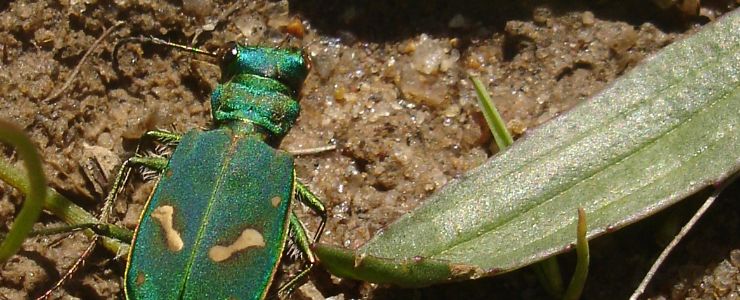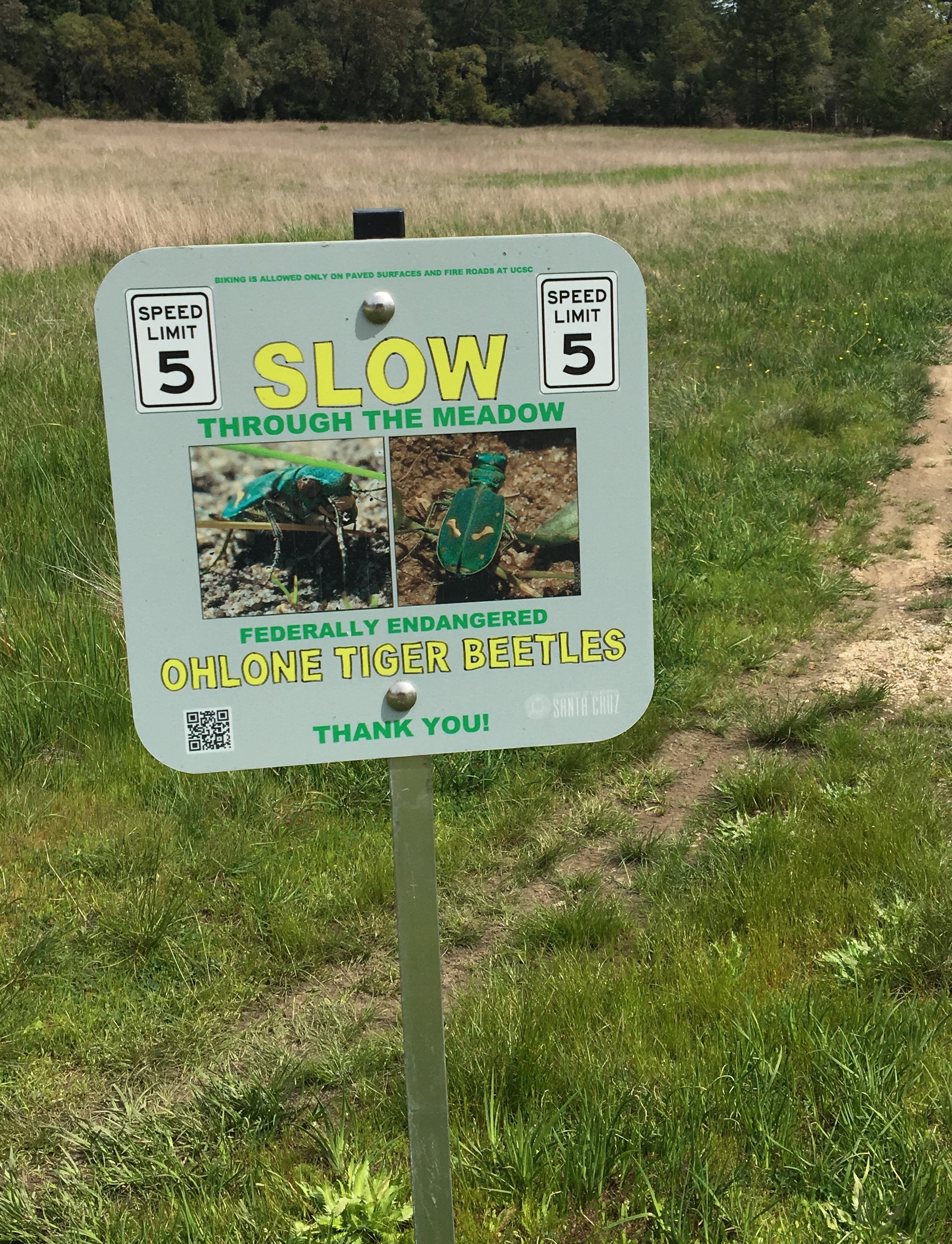Ohlone tiger beetle
The Ohlone tiger beetle (Cicindela ohlone; OTB) is a federally endangered species that exists in only a handful of location on Earth, all in Santa Cruz County (Knisley and Arnold 2013). All known populations are found on coastal terrace prairie areas underlain by a small variety of loam soils, including Watsonville loam. Two areas on the UCSC main campus support small populations of OTB. These areas are managed through a combination of prescribed fire, grazing, creating of bare ground through artifical scrapes, and mowing/raking.
Adults are active on sunny days (or warmer cloudy days) between January and May, and use bare ground for mating, basking, hunting, and larval development within burrows. Eggs hatch within ~2 weeks of being laid, and larva go through 3 instar stages of development, lasting ~3-5 weeks (1st instar), ~5-10 weeks (2nd instar), and ~7-8 weeks (3rd instar, which then plugs its burrow until metamorphosis and adult emergence, usually the following winter; Knisley and Arnold 2013).
These fascinating little predatory jewels are threatened by habitat loss, increased levels of invasive plant species, lack of management to create and maintain bare ground, and recreation.
Recreation has the ability to both help and harm the OTB. Dr. Tara Cornelisse's PhD research demonstrated that slowing down to 5 mph when biking in OTB habitat allows the beetles to fly away, but not too far (Cornelisse et al. 2013). This allows them to not get crushed, but also to not waste too much energy by reducing the distance from which they flew away from the disturbance. If you see "Slow through the Meadow" OTB signs while you are biking around campus during January though May, please reduce your speed to 5 mph or less as you pass through the meadow.
OTB video interview with Alex Jones, UCSC Campus Natural Reserve Manager
(Please note the correct timing of larval instar phases noted above, as they are incorrectly stated in the video. Additionally, Alex mentions that 3rd instar larval burrows extend to a depth of 8", but he meant to say 8 cm).
Peer-reviewed literature:
Cornelisse 2013 PhD dissertation
CONSERVATION OF THE ENDANGERED OHLONE TIGER BEETLE (CICINDELA OHLONE)
Blog post from Dr. Tara Cornelisse


